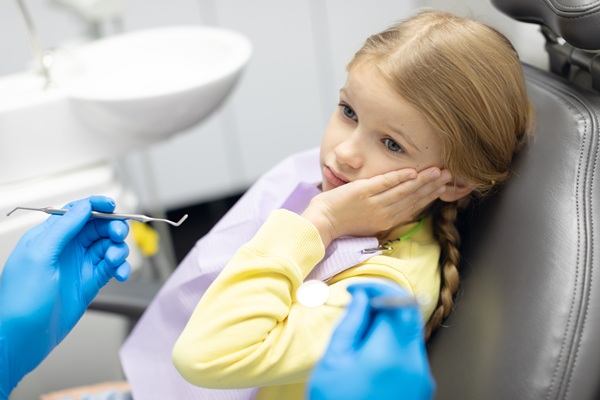Pediatric Tooth Extractions: A Guide for Parents on Healing and Care
While dentists aim to preserve natural teeth, are sometimes necessary. This can result from severely decayed teeth, addressing crowding, or making space for incoming permanent (adult) teeth. While the thought of tooth extractions can be concerning for parents, understanding the process and how to care for your child post-procedure can help ensure a smooth healing process.
Reasons for needing pediatric tooth extractions
Dentists perform pediatric tooth extractions as a last-ditch effort to preserve the health of the entire mouth. The most common reasons that drive pediatric dentists to this conclusion include:
- Severe decay infection. When a tooth has extensive decay, and the dentist cannot address it with a restorative, extraction may be necessary to prevent the spread of infection to other tissues.
- Orthodontic preparation. If there is crowding or the child requires orthodontic planning, such as making room for permanent teeth, extractions may be necessary.
- Impacted teeth. A tooth that becomes fully or partially trapped under the gum line can lead to pain, infection, misalignments, and require extraction.
- Trauma or injury. Severely damaged teeth may need an extraction if the dentist cannot repair them with traditional restoratives like a dental crown, fillings, or bonding.
Understanding the reason for the extraction can help parents and patients, depending on their age, better prepare for the procedure.
Types of pediatric tooth extractions
A dentist will consider two types of pediatric tooth extractions: simple and surgical. A simple tooth extraction is the preferred method, especially for children. It involves removing the problem tooth from the socket by moving it back and forth with dental forceps, negating the need for stitches. On the other hand, a surgical extraction requires the pediatric dentist to create an incision in the gum line to release the tooth from its socket before suturing the area.
Parents should note that their child will not feel pain during either extraction type due to the employment of anesthesia. At most, they may feel a certain level of pressure. However, following post-extraction guidelines is essential to reduce the risks of complications and encourage a successful recovery.
Post-extraction care tips
Following either type of pediatric tooth extraction, the dentist will provide patients with appropriate aftercare instructions to promote healing. These may include:
Medication management
As previously mentioned, children will not feel pain during the procedure. In fact, they will not feel pain for a few hours following either. However, pain is expected once the anesthesia wears off. Therefore, the pediatric dentist may prescribe pain medication, which should be taken as directed. Parents should note that children should not be in charge of taking their own medication but only under their close supervision to prevent complications.
Managing bleeding and swelling
Regardless of the type of pediatric tooth extraction, slight bleeding is normal. To control bleeding, children should keep a gauze pad over the extraction site while gently biting down on it for at least 20 minutes. Further, applying a cold compress to the outside of the cheek near the extraction site can also help reduce swelling.
Encourage rest
Just like after any procedure involving anesthesia, rest is essential. Further, children will want to decrease their physical activity within the days following the procedure to reduce the risk of increased bleeding. Quiet activities such as reading, coloring, or watching their favorite shows can help them stay calm and allow their body to focus on healing.
Monitor diet
Following the extraction, children must adopt a lightly seasoned, soft diet. For the first few days, parents should purchase applesauce, yogurt, mashed potatoes, or soup. Ensure the food is not too hot, and the child should not be allowed to use a straw. Both of these factors can disrupt the blood clot and increase bleeding. Additionally, children should increase their water intake to stay hydrated.
Oral hygiene adjustments
Lastly, while oral hygiene should be maintained after the extraction, it will be altered slightly. For the first 24 hours, the dentist will permit rinsing the mouth with a warm saltwater mixture. However, patients should avoid using oral tools around the extraction site until healing is complete. Further, avoiding an alcohol-based or abrasive oral care product until completely healed will be beneficial.
Call us for more information
Pediatric tooth extractions are a common procedure to promote better oral health for children. By following post-extraction care instructions and monitoring your child's healing, you can ensure a smooth recovery. For more information or to schedule your child's extraction appointment, contact Manvel Pediatric Dentistry today.
Request an appointment here: https://www.manvelpediatricdentistry.com or call Manvel Pediatric Dentistry at (832) 645-2848 for an appointment in our Manvel office.
Check out what others are saying about our services on Yelp: Read our Yelp reviews.
Related Posts
The American Academy of Pediatrics reports that 30% of children experience an oral injury by age 14. These injuries are usually not initially treated in a pediatric dentistry office, as the urgency of such accidents prompts most parents to visit an emergency room or urgent care center. While most injuries to the teeth and mouth…
Educational services are a primary component of early dental care. Education services aim to teach parents and children how to care for baby teeth and periodontal health. The lessons we teach during early dental care often carry into the child’s teenage and adult years, helping them maintain a beautiful and healthy smile for life. There…
A pediatric dentist knows how common cavities are in children. Spotting and treating tooth decay in children can stop its progress early. This can give your child a healthy start in life. Protecting your child’s teeth from deterioration is possible with dental sealants. If you want to know when a pediatric dentist may suggest dental…
Giving the proper dental injury treatment for children can eliminate worry and more damage. Injuries to the teeth can cause pain and discomfort. It can even affect your child’s performance at school. Once your child experiences a dental injury, seeing a dentist is necessary. If you want to know the types of dental injury treatment…

